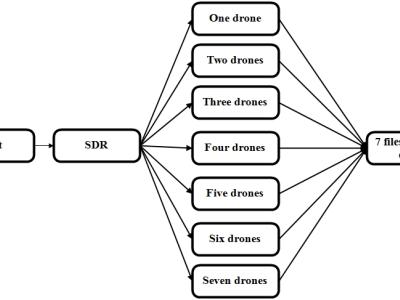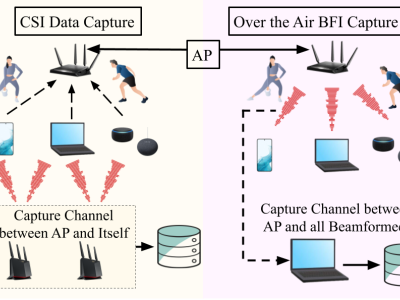This dataset is created for handshake flooding attack on n2 interface of 5g control plane
- Categories:
This dataset is created for handshake flooding attack on n2 interface of 5g control plane

This dataset provides high-grade Received Signal Strength Indicator (RSSI) data collected from a set of experiments meant to estimate the number of drones present in a closed indoor space. The experiments are conducted varying the number of drones from one to seven, where all the variations in RSSI signal data are captured using a 5G transceiver setup established using Ettus E312 software-defined radio. There are seven files in the database, with a minimum of about 270 million samples.
The main goal of this research is to propose a realistic benchmark dataset to enable the development and evaluation of Internet of Medical Things (IoMT) security solutions. To accomplish this, 18 attacks were executed against an IoMT testbed composed of 40 IoMT devices (25 real devices and 15 simulated devices), considering the plurality of protocols used in healthcare (e.g., Wi-Fi, MQTT and Bluetooth).

Wi-Fi sensing has emerged as a promising non-intrusive approach for human activity recognition (HAR), leveraging the widespread availability of Wi-Fi-enabled devices. While machine learning tools help extract meaningful features from complex wireless propagation patterns, developing robust and domain-adaptive models remains challenging without diverse datasets.

This dataset is associated with the paper entitled "User-Centric Caching in Personal Vehicles: MyCar-MyCache". It tracks 3,463 app sessions from 5 users over 14 days in a residential wireless local area network. Seven distinct apps appear with App_A being most popular (678 sessions). Usage peaks midday (12pm: 210 sessions) and is lowest late evening (11pm: 89 sessions). Average session duration is 30 minutes with 50.2 MB data consumption per session. Daily activity remains consistent (234-266 sessions) with no significant day-of-week patterns.
Distributed Denial of Service (DDoS) attacks,
particularly those executed by bots, significantly impair the
Quality of Service (QoS) for legitimate users. While network-level
DDoS attacks have been largely mitigated through decades of
research, application-level DDoS attacks remain a challenge due
to the difficulty in distinguishing malicious from legitimate traffic.
Traditional approaches have relied on statistical models analyzing

Dataset for QoS-aware LLM Routing Experiment.
paper abstract:

Solar Insecticidal Lamps Internet of Things (SIL-IoTs) is an advanced agricultural IoT system integrating solar insecticidal lamps with wireless sensor networks. It attracts pests with light, then kills them with high-voltage metal grids. Equipped with wireless communication modules and environmental sensors, SIL-IoTs can collect and transmit field data, including pest counts (discharge pulse counts, insect-killing sound pulse counts), environmental data (air temperature, humidity, light intensity, equipment box temperature), and operational status.